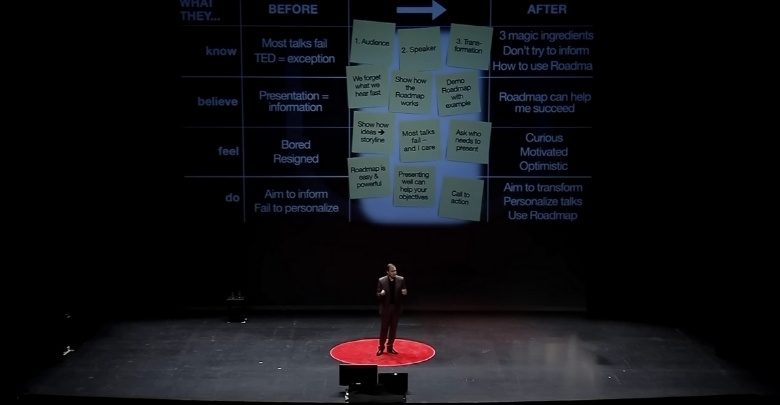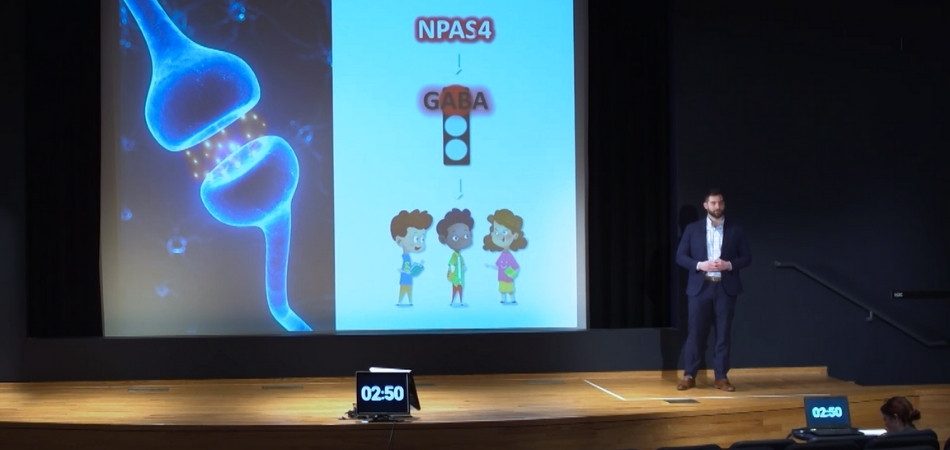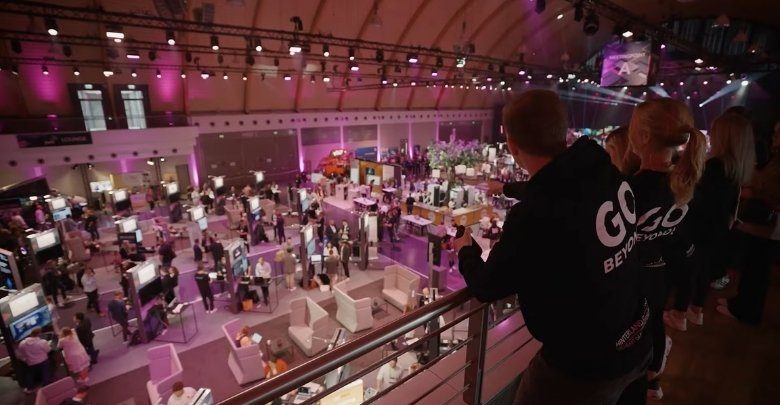Presenting at a humanities conference offers a great chance to share ideas and engage with scholars from diverse fields. However, the format of presentations can shape how ideas are shared and understood. This is where a question arises: What types of presentations are common at humanities conferences?
Humanities conferences feature diverse presentation styles, including research paper presentations, poster sessions, panel discussions, and creative performances. Other formats, like roundtables and workshops, promote collaboration, while keynote speeches and interactive media presentations provide inspiring and innovative insights.
Are you curious to explore how these formats enrich academic dialogue? This article has everything you need to know about common presentation types and how they make humanities conferences dynamic and impactful.
Why Do Presentation Formats Matter at Humanities Conferences?
The choice of presentation formats at humanities conferences plays a key role in engaging the audience. Different formats, like panel discussions or interactive workshops, suit various preferences. Selecting the right method ensures both the presenter and attendees benefit from the shared knowledge.
Interactive presentations provide a hands-on approach, encouraging attendees to actively engage with the material. Roundtables, for example, allow open discussions, which can lead to deeper understanding and collaboration among participants.
The right presentation style bridges the gap between complex research and easy understanding. A thoughtful format ensures ideas resonate with diverse attendees, helping both speakers and listeners connect effectively during the conference.
If you’re planning to present at the upcoming international humanities conferences in Canada, consider formats that match your interests. This way, you can maximize your experience in these events and gain meaningful insights from the sessions.
What Types of Presentations Are Common at Humanities Conferences?
In humanities conferences, scholars explore diverse ideas, share innovative research, and build enriching collaborations. Through these presentations, individuals can gain a deeper knowledge of human culture and knowledge. Here are more details about the event!
Research Paper Presentations
Attendees at conferences often witness carefully structured research papers presented to highlight key insights and analysis. The speaker usually provides the main arguments, evidence, and potential conclusions engagingly. These papers focus on showcasing insightful thinking and significant research findings, often linked to specific humanities fields. Audience members may ask for clarifications or engage in discussions, deepening their knowledge.
Poster Presentations
Researchers sometimes display visual summaries of their work in posters, inviting viewers to learn and engage. These sessions often occur during breaks, allowing informal conversations between researchers and conference attendees. Presenters stand by their posters, ready to answer questions or explain the finer points of their research. Posters often serve as effective tools for summarizing key information in accessible ways.
Panel Discussions
A group of speakers frequently takes part in panels to discuss related topics and promote lively discussions. These sessions allow for multiple perspectives, providing attendees with varied insights into complex issues. Panelists respond to each other’s thoughts, promoting rich and thought-provoking exchanges. Active moderation ensures discussions remain balanced and productive, keeping the audience engaged and focused on the topic.
Roundtable Discussions
Small groups of participants often gather for roundtables, facilitating open conversations on focused topics. These sessions encourage collaboration, as participants can share insights or brainstorm ideas in an interactive setting. Unlike formal panels, roundtables encourage closer interaction among attendees and create a more relaxed environment. This format often leads to new partnerships and shared research opportunities.
Creative Performances and Exhibitions
Art exhibits, poetry readings, and theatrical performances are frequently included in humanities conferences. These offerings allow artists and scholars to merge research with creativity, providing unique perspectives. Performances often invite emotional responses, enabling attendees to connect intellectually and personally. Exhibitions create immersive experiences, showcasing themes in ways that inspire deeper understanding and reflection.
Workshops and Skill-Building Sessions
Participants can learn specific skills or explore methodologies through workshops. Experienced facilitators guide attendees through exercises, ensuring an engaging and participatory learning experience. These sessions often focus on tools relevant to humanities research, such as digital tools or archival methods. As a result of workshops, participants walk away with practical knowledge they can immediately apply to their jobs.
Keynote Speeches
A keynote address is often delivered by a distinguished scholar or thought leader to open or conclude a conference. These speeches typically explore big-picture themes or emerging trends within the humanities. Speakers aim to inspire audiences by connecting historical perspectives with current issues. An opening keynote sets the stage for collective reflection and sharing of visions.
Interactive Media Presentations
Technology can be used by presenters to create interactive and engaging sessions. This format might include digital storytelling, virtual reality demonstrations, or interactive online platforms. Technology helps presenters offer dynamic and memorable experiences, allowing attendees to explore humanities topics from fresh angles. These sessions emphasize creativity and new approaches, expanding how research is shared.
Humanities conferences provide opportunities to explore research, creativity, and collaboration in diverse formats. Each presentation type brings new perspectives, encouraging curiosity and scholarly growth among participants. Use these insights to understand and engage better in future academic events!
How to Choose the Right Presentation Type for Your Research?
The type of presentation you choose will guarantee that your research is understood by the audience and has the greatest possible impact. Knowing different formats and aligning them with your goals improves how your ideas are shared. Take a look at the insights below for clarity:
Acknowledge Your Research Goals
Clarifying the purpose of your presentation helps in aligning it with the most suitable format. Consider whether your research aims to showcase findings, encourage collaboration, or promote discussions. Selecting a format that highlights unique aspects of your work ensures your message is communicated effectively.
Analyze Your Target Audience
Knowing your audience’s preferences ensures your chosen format resonates effectively with their expectations. Consider their familiarity with your research area, their level of expertise, and their engagement style. Some attendees at a humanities conference might prefer interactive discussions, while others look for formal research presentations.
Match Format to Content Complexity
Certain formats work better when presenting intricate data or complex theories to your audience. Workshops or poster presentations often suit detailed explanations requiring visuals or interactivity. For example, if you plan to present at a humanities conference in Canada, ensure the format complements your content’s depth and clarity.
Analyze Time and Resources Available
Different formats require varying levels of preparation and materials, so choose based on your resources. For shorter sessions, poster presentations or lightning talks may be ideal, while workshops demand more time. Presenting your work effectively involves balancing the available time with the demands of your selected format.
Consider Engagement and Feedback Opportunities
Interactive formats encourage direct conversations, allowing real-time feedback to refine or expand on your ideas. Discussions or roundtables offer excellent engagement opportunities for collaborative refinement. Selecting a type that invites meaningful exchanges ensures a dynamic experience for both the presenter and the audience.
Selecting the right presentation type ensures your research reaches its audience effectively and leaves a lasting impression. By figuring out your objectives and audience, and matching these to available resources, you can maximize your conference experience and improve your academic growth.
Essential Tips for Preparing a Successful Paper Presentation
It takes careful planning and effective communication to deliver a paper presentation. The secret to success is keeping your audience interested while sharing your research effectively. With the right strategies, your presentation can leave a lasting impression. Below are some tips for preparing a successful paper presentation:
- Structure Your Content Well: Organize your presentation into a clear introduction, main body, and conclusion to maintain clarity and a logical flow of ideas.
- Practice for Perfection: Rehearse multiple times to improve delivery, reduce anxiety, and identify any areas needing refinement or better transitions.
- Use Visual Aids Sparingly: Incorporate slides or props that complement your presentation but avoid overloading them with excessive text or unnecessary details.
- Focus on Key Points: Highlight the most important aspects of your research and avoid overwhelming the audience with too much information or jargon.
- Engage with Storytelling: Use stories or examples to illustrate your points and create an emotional connection with the audience for better engagement.
- Maintain Eye Contact: Connect with your audience by looking at them directly instead of reading verbatim from your notes or slides.
- Time Your Presentation: Stick to the allotted time by practicing beforehand and ensuring you cover all key points without rushing or dragging.
- Be Ready for Questions: Anticipate possible questions and prepare answers that clarify or elaborate on your key points effectively without digressing.
- Stay Confident and Enthusiastic: Maintain a confident posture and display genuine enthusiasm about your topic to inspire interest and respect from your audience.
A successful paper presentation combines preparation, clarity, and engagement. These tips help create a meaningful experience for both the presenter and the audience. With thoughtful planning and practice, you can confidently deliver an impactful presentation.
Future of Humanities Conferences: Emerging Presentation Formats
As innovation shapes the way topics are explored, future humanities conferences will be more dynamic and inclusive. Emerging formats are transforming how ideas are shared and connections are built.
Hybrid Formats Blend Digital and Physical Worlds
The gap between conventional in-person meetings and contemporary digital platforms is being closed by hybrid conferences. Attendees can engage both online and offline, enabling broader participation. With such flexibility, more opportunities arise for global conversations and creating new collaborations.
Interactive Workshops Boost Participant Involvement
Nowadays, these events’ workshops include exercises that encourage hands-on learning. Instead of just listening, attendees actively contribute, discussing significant points. This ensures that when the topics are covered at a humanities conference, they’re better understood and remembered by the participants.
Collaborative Panels Encourage Diverse Perspectives
There is a growing trend towards panels becoming spaces of genuine discussion where diverse perspectives converge. Through open discussions, speakers connect with audiences meaningfully. This is especially valuable in sessions where essential cultural issues are addressed in a broader context.
Immersive Technologies Enhance Storytelling
The use of VR, AR, and interactive tech is bringing humanities discussions to life. Presenters use these tools to craft engaging narratives, making even abstract ideas tangible. Such advancements enrich knowledge and redefine learning environments.
Informal Spaces Build Deeper Connections
Conferences now emphasize creating informal spaces for networking. These areas help participants form strong bonds and exchange ideas freely. Informal discussions often lead to fresh collaborations, adding unique value beyond traditional presentations.
The future of humanities conferences is undoubtedly exciting, with innovative formats reshaping how people connect and learn. As these events evolve, they will remain essential hubs of intellectual growth.
Frequently Asked Questions
Here’s a quick guide to frequently asked questions about presentations at humanities conferences. Whether you’re a first-time attendee or a seasoned scholar, these answers provide helpful insights about unique formats and tips for making the most of your conference experience.
How Are Lightning Talks Used in Humanities Conferences?
A lightning talk lasts between 5 and 10 minutes and consists of a brief, high-energy presentation. They allow speakers to summarize their research or introduce ideas quickly, making them ideal for packed schedules. These talks encourage presenters to focus on key points, providing the audience with concise insights while inspiring curiosity for further discussion.
What Is a Digital Poster Presentation?
Using digital screens or online platforms, digital poster presentations are electronic displays of research. They combine visuals, text, and multimedia for an interactive experience. Attendees can browse digital posters at their convenience, and presenters are available for questions, offering flexibility and engagement in a tech-savvy format.
What Are Ignite Sessions, and How Do They Work?
A sequence of five-minute presentations with twenty automatically advancing slides make up an Ignite session. This fast-paced format challenges presenters to distill their ideas effectively while maintaining audience interest. Ignite sessions are engaging and promote quick idea-sharing across a range of topics.
How Do Collaborative Demonstrations Enhance Participation?
Collaborative demonstrations involve presenters showcasing tools, methods, or creative works while inviting audience interaction. This format integrates theory and practice, enabling attendees to experience the material firsthand. These sessions are particularly effective for sharing innovative practices or methodologies dynamically and memorably.
What Role Do Symposiums Play in Humanities Conferences?
An expert panel discusses a specific theme or issue in depth during a symposium. Each participant presents their perspective, followed by a moderated discussion. This format encourages comprehensive exploration of a topic, combining prepared content with audience-driven discussion for deeper learning.
Why Are PechaKucha Presentations Gaining Popularity?
Using 20 slides that are displayed for 20 seconds each, PechaKucha presentations create a succinct, visually stimulating narrative style. This structured approach emphasizes creativity and keeps audiences engaged. Widely popular at humanities conferences, PechaKucha sessions allow scholars to present complex ideas in a simple, impactful manner.
Bottom Line
During humanities conferences, diverse ideas are presented in dynamic formats. From research papers to workshops, creative performances, and interactive media, each type encourages meaningful connections and learning. Now, you know what types of presentations are common at humanities conferences and how they enrich the experience.
To make the most of your participation, choose a format that best suits your content and audience, practice your delivery, and explore opportunities for engagement. Remember to stay confident and enjoy sharing your work. Best wishes for a successful and inspiring conference experience.








